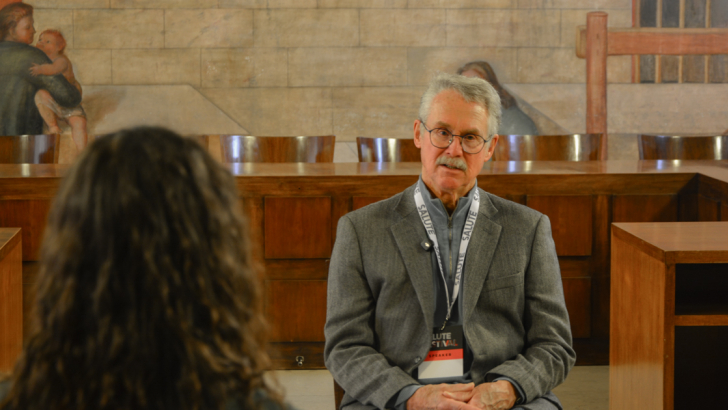The Museum of Nature and Humankind. Interview with Ken-ichi Shinoda

Curiosity, a defining characteristic of our species, drives us to uncover the mysteries of the unknown. By delving into the inner workings of the world around us, we not only deepen our sense of awe towards the universe but also gain a profound understanding of its history and mechanisms. By finally recognising our fundamental dependence on the planet we call home, we now understand that unravelling its secrets is a necessary condition for its preservation.
In this pursuit of knowledge and the cultivation of awareness regarding our relationship with the rest of the natural world, science museums play a crucial role. Originating in the 17th century as a manifestation of the Enlightenment's scientific worldview, as Elena Canadelli explained during an interview with Il Bo Live, these institutions have evolved into prominent channels for sharing historical knowledge and inspiring reflections on the future.
One of the world’s most prominent naturalistic museums is the National Museum of Nature and Science in Tokyo. Established in the latter half of the 18th century, this institution remains a prominent centre for research and knowledge dissemination, not only within Japan but also across the entire East Asian region. On the occasion of the opening of the Museum of Nature and Humankind at the University of Padua, we had the opportunity to interview Ken-ichi Shinoda, the director of the National Museum of Nature and Science in Tokyo.
Ascolta l'intervista a Ken-ichi Shinoda. Servizio e montaggio di Sofia Belardinelli
Throughout its almost 150 years of existence, the Museum has evolved following societal changes. As Shinoda shares with Il Bo Live, the original name of the museum reflected its social role. It was initially conceived as an “Educational Museum”, with the primary objective of educating children, students and the general public about science. «After the Second World War, however, Japan witnessed the establishment of several specialized museums of science and technology, and our museum became the National History Museum», the director points out.
As in most scientific museums, sharing science knowledge is not the only goal. These institutions also serve as pioneering research centres, and the Tokyo Museum is no exception. «The main strength of research conducted in science museums is interdisciplinarity. Each researcher not only manages research in his own specialized field, but also engages in joint research. For example, the Tokyo Museum is currently involved in surveying the biota of South-East Asia, encompassing the expertise of animal and plant researchers, as well as geological and fossils experts, all of which collaborate to survey the same area. By doing so, we will be able to clarify the relationship between geology, plants, and animals, an aspect which has often been overlooked until now. Such joint research is easier to do than in university, where each research is highly independent», the director explains.
As for the other major aim of a science museum – knowledge sharing – there are many projects in the pipeline. «The Covid-19 crisis has become an opportunity for us», Shinoda argues. «We started new programmes for schools and took the opportunity to rethink our information-sharing strategies».
However, it is crucial to remember that educational outreach should not solely target students. This is particularly true in countries like Japan and Italy, which have experienced a dramatic demographic decline in recent years, resulting in a decrease in the number of children and youth. «We are aware of this challenge, which is why, in the future, we plan to work harder to bring adults into science museums as well. One way to do this is to broaden our offer to the public, exploring new ways of communication and playing with different art forms».
______________________________________________________
SPECIALE "MUSEO DELLA NATURA E DELL'UOMO”
1 - Aspettando il Museo della Natura e dell’Uomo. Come nascono le collezioni naturalistiche
2 - Aspettando il Museo della Natura e dell’Uomo. Collezioni naturalistiche, l'impatto sul territorio
3 - Il Museo della Natura e dell'Uomo apre alla città
4 - Intervista a Ken-ichi Shinoda
5 - Intervista a Jeffrey Post
6 - Intervista ad Analía Lanteri
7 - Intervista a Katrin Vohland









